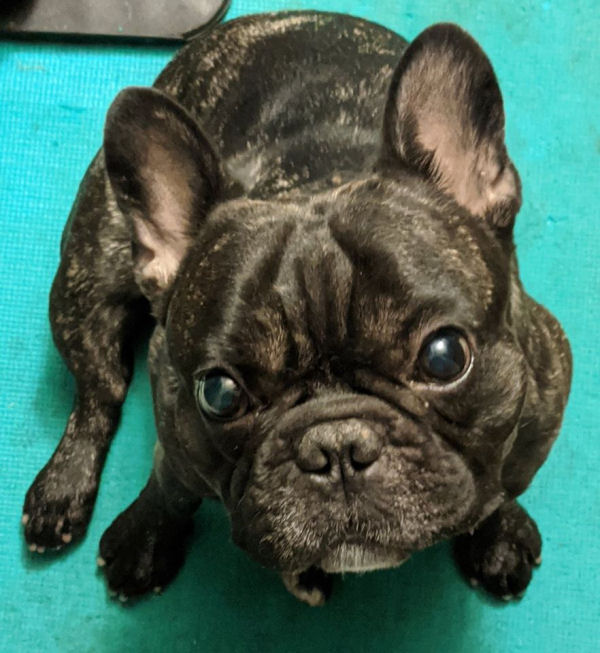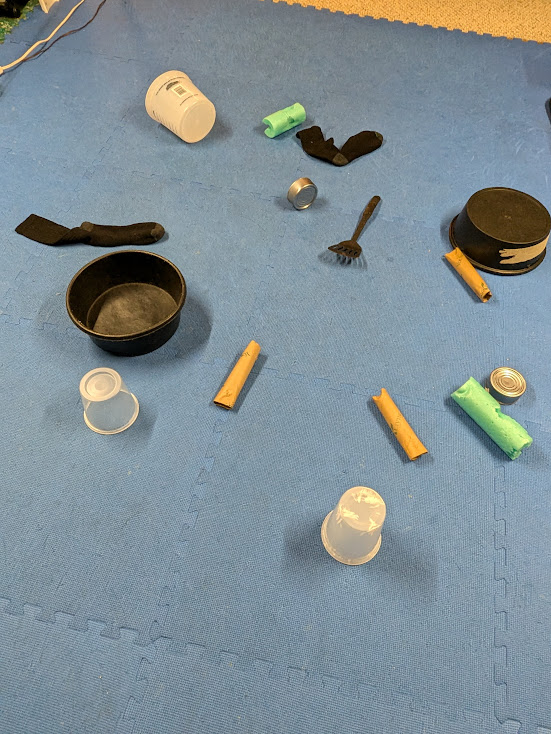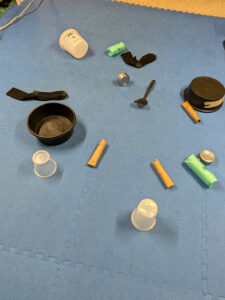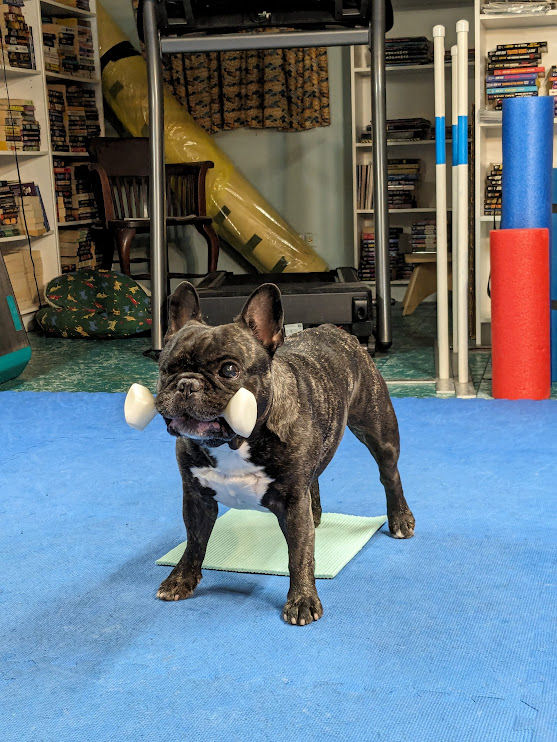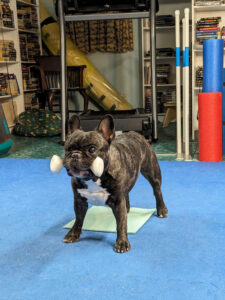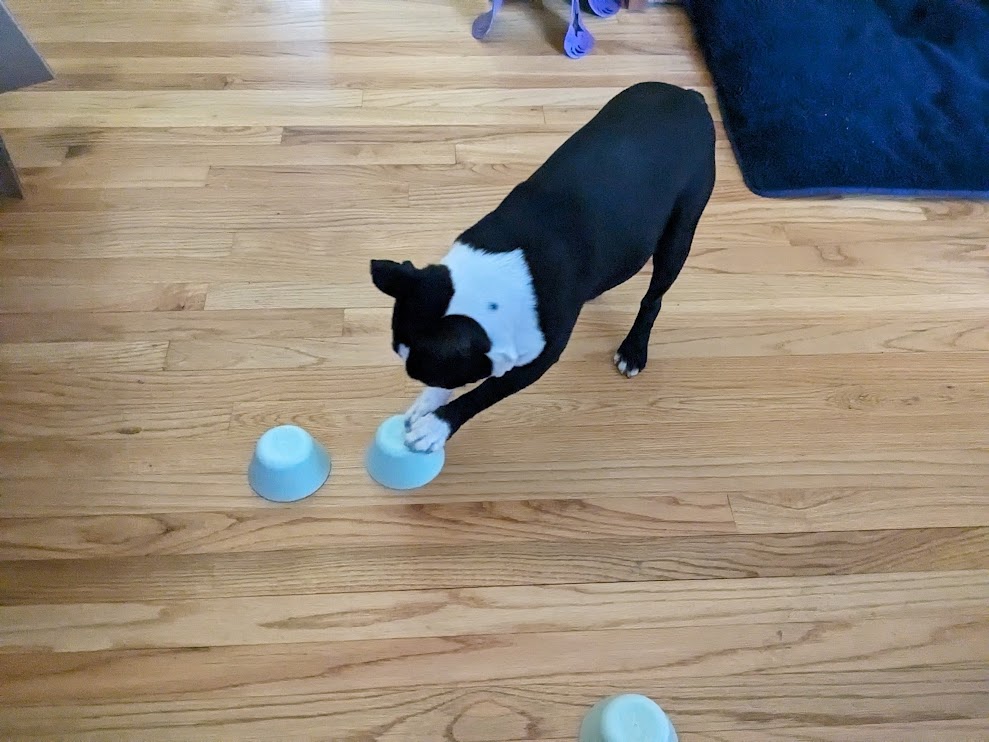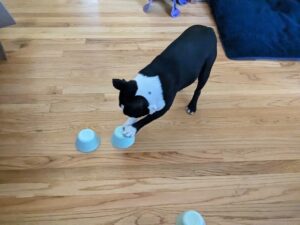What kind of feedback is your dog getting? Are you making sure that doing it right looks different from doing it wrong?
Let’s say you’ve been practicing a particular behavior with your dog.You’ve been working on it for a while, but your dog just isn’t getting it. It could be anything from the simplest position change to a complex trick. You keep trying, but you’re getting a little frustrated and about ready to throw in the towel.
And then, giving it one more try for the day, your dog does it right! What do you do to mark the occasion?
- Just move on and think to yourself “Finally!” Or do you
- Stop and celebrate?
If you picked A, pick again. Our trainees hear it all the time: “Doing it right has to look different than doing it wrong.”
How do they know?
When you regularly play training games with your dog, the two of you often act as a team. If your dog could talk, they could probably finish your sentences most of the time. But they can’t talk. And they don’t understand what we want of them until we teach them. You have to let your dog know when they’re right.
2-Minute Dog Training Games are built on understanding that dogs learn through the timing and placement of rewards. No reward tells your dog “Sorry, buddy. That wasn’t it.” When they get a jackpot the message is clearly: “Yay for you! You did it!”
Dogs want to get things right and earn that jackpot. Knowing their effort will be rewarded motivates them to keep trying. If at first they don’t succeed they know to try, try again.
For instance
Torque, Hope’s French Bulldog, loves doing Rally Obedience stuff. There was one upper-level sign he just wasn’t understanding. It was the “Send Away Sit / Return / Follow Arrow” signs at the Master level, for Rally people. He just didn’t “get” that he had to go near the cone (6 feet away), turn around and then sit. Even teaching the segments separately didn’t work. Putting a target near the cone didn’t work. He just wasn’t getting it.
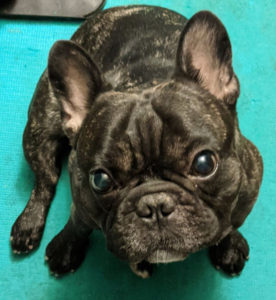
They practiced it about every couple of weeks for several months. There was no urgency, and Hope tried different targets, signals, commands. But it wasn’t happening. Torque knew it wasn’t right because he didn’t get any treats. But he was willing to keep trying because we didn’t hammer at it, tell him he was wrong, or enforce any kind of punishment.
Doing it right looks different
Then came the day when he did it. Perfectly. The first try. Hope stopped everything and gave that boy a jackpot of treats, an ear massage, and quit for the day. Doing it right looks different, and he’s done it right every time since.
Make it a big deal
If it’s a big deal when the dog gets something right, and nothing when they don’t, the dog has a reason to keep trying. Dogs love having a “job” and “working” with their people. But there’s no reason to keep doing it if their efforts gain them nothing.
Quite a few of the comments on our videos are similar to “my dog isn’t interested.” Or “my dog won’t listen.” And to each of these we ask – what motivation are you giving your dog? Do they get anything special for listening? For being interested? If doing nothing and doing something all get the same treatment, why would they bother?
It’s on you
There’s a saying among dog trainers that “Every dog is trained to its owner’s level of comfort.” Most people quit trying when their dogs learn the bare minimum to live comfortably. As long as their dog doesn’t chew their shoes and potties where they’re supposed to, they’re satisfied.
And if that’s all you want, that’s fine. It’s between you and your dog. But if you want to have a real companion who loves doing “stuff” with you and has a big, happy life, you’ll strive for more. And make it look different when you get it.

